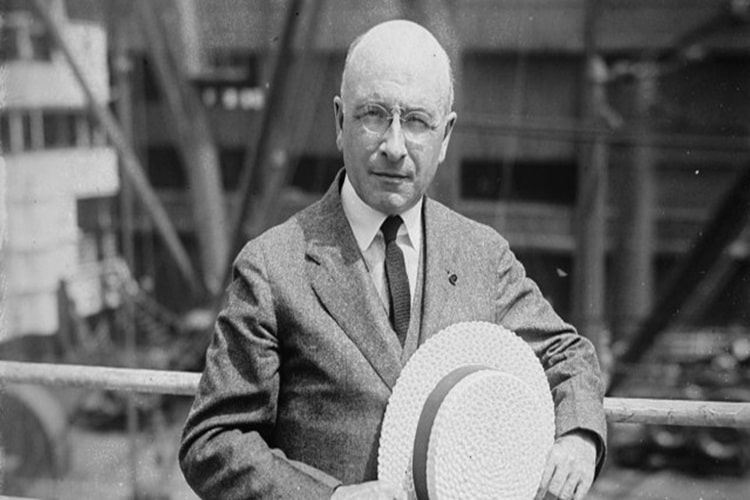Celebrating life and legacy of Alexis Carrel

Alexis Carrel (28 June 1873 – 5 November 1944) was a French surgeon and biologist. He was awarded the Nobel Prize in Physiology or Medicine in 1912.
Early Life And Education
Alexis Carrel was born on June 28, 1873, in Sainte-Foy-lès-Lyon, Rhône, France. He was raised in a devout Catholic family and received his early education from Jesuits. Despite this religious upbringing, Carrel became an agnostic during his university years. His father, also named Alexis Carrel, was a businessman who passed away when Carrel was young, leaving the family in the care of his mother, Anne Ricard. Carrel pursued his higher education at the University of Lyon, where he earned his degrees in letters and sciences, culminating in a doctorate in medicine in 1900. His early medical work at the Lyon Hospital and his innovative research in vascular suturing techniques laid the foundation for his illustrious career in surgery and biology.
Career And Achievements
Alexis Carrel illustrious career began with degrees in letters and science from the University of Lyon, followed by a doctorate in medicine in 1900. Carrel’s early work in Lyon laid the foundation for his future achievements, which included the development of new surgical techniques and the successful transplantation of tissues and organs. His groundbreaking method for suturing blood vessels, essential for organ transplants, earned him the Nobel Prize in Physiology or Medicine in 1912.
During World War I, Carrel, serving as a major in the French Army Medical Corps, co-developed the Carrel-Dakin method of treating wounds with antiseptic solutions, significantly reducing infection rates in injured soldiers. His research at the Rockefeller Institute for Medical Research in New York City furthered the understanding of vascular surgery and tissue preservation. In collaboration with famed aviator Charles Lindbergh, Carrel invented a perfusion pump to preserve organs outside the body, a precursor to modern organ transplantation methods. Carrel’s contributions to medicine were recognized worldwide, earning him memberships in prestigious societies across the globe and honorary doctorates from several universities. He was a Commander in the Legion d’Honneur of France and received numerous other decorations and honors for his medical and scientific advancements. His legacy continues to influence contemporary medical practices and research in the field of surgery and organ transplantation.
Notable Events And Milestones
Alexis Carrel medical journey began at the University of Lyon, where he received his Bachelor of Science in 1890 and his medical degree in 1900. Carrel’s pioneering work in vascular suturing techniques earned him the Nobel Prize in Physiology or Medicine in 1912, a milestone that underscored his innovative approach to surgery and organ transplantation.
Carrel’s collaboration with Charles Lindbergh led to the invention of the first perfusion pump, a groundbreaking development that paved the way for organ transplantation. His work at the Rockefeller Institute for Medical Research in New York further solidified his legacy, particularly through his advancements in tissue culture and transplantology. Carrel’s techniques in vascular suturing became essential for many surgical operations and laid the foundation for future breakthroughs in medical science. However, Carrel’s legacy is not without controversy. His advocacy for eugenics and his role in implementing eugenic policies in Vichy France during World War II have sparked debate and criticism. Despite these contentious aspects of his career, Carrel’s scientific achievements have had a lasting impact on the field of medicine. His research on the conservation of living tissues outside the body, particularly the maintenance of a living culture for over two decades, has influenced modern stem cell research and regenerative medicine.
Carrel’s contributions extended beyond the laboratory and the operating room. His book “Man, the Unknown” introduced his thoughts on society, culture, and the potential for human improvement, reflecting his complex views on humanity and science. While some of his social philosophies have been challenged, his medical innovations remain a testament to his skill and foresight as a scientist. The influence of Alexis Carrel’s work is evident in today’s medical practices, from organ transplants to the treatment of war wounds with antiseptic methods. His dedication to improving surgical techniques and understanding the mechanisms of life has left an indelible mark on the history of medicine. Alexis Carrel passed away on 5 November 1944, at the age of 71. He died in Paris, France, leaving behind a legacy of pioneering research and contributions to the medical field.
Awards And Honors
- Nobel Prize in Physiology or Medicine (1912): Awarded for his pioneering work in vascular suturing techniques.
- Honorary memberships of learned societies across various countries, including the U.S.A., Spain, Russia, Sweden, The Netherlands, Belgium, France, Vatican City, Germany, Italy, and Greece.
- Honorary doctorates from several prestigious universities such as Belfast, Princeton, California, New York, Brown, and Columbia Universities.
- His work on vascular suture and the transplantation of blood vessels and organs was groundbreaking and earned him widespread recognition in the medical field.
Additional Resources
Here are some resources to learn more about Alexis Carrel:
- “La Incognita Del Hombre” by Alexis Carrel, available for free on Archive.org.
- A documentary featuring Alexis Carrel can be found on the Nobel Prize’s official website, providing insights into his Nobel-winning work.
- For a comprehensive overview of his life and contributions, the Wikipedia page on Alexis Carrel is a valuable resource.
These resources offer a range of perspectives on Carrel’s scientific achievements and his impact on medicine.
Observer Voice is the one stop site for National, International news, Sports, Editor’s Choice, Art/culture contents, Quotes and much more. We also cover historical contents. Historical contents includes World History, Indian History, and what happened today. The website also covers Entertainment across the India and World.
Follow Us on Twitter, Instagram, Facebook, & LinkedIn

